Recently, a team from ASTAR, a microelectronics institute in Singapore, produced a small sensor that combines a stable diaphragm with easy-to-sensing silicon nanowires, making MEMS pressure sensors even more Stable and durable for medical devices. In principle, it is very simple to design a small pressure sensor: a pressure-deformed diaphragm can be embedded in a varistor. This varistor must be resistant to changes in resistance caused by pressure, such as silicon nanowires. Made of materials. But in fact there are problems, including circuit design and fragile components, where any error is a fatal injury to commercial sensors. Since this diaphragm must transmit small pressure changes to the varistor while resisting deformation and breakage, the choice of this diaphragm material is critical. So Luo and his colleagues thought of using silica to show perfect pressure sensing performance. However, although silica has superior sensing properties, it cannot overcome the weakness of flexibility. Therefore, Luo changed the solution to use double-layered silicon dioxide, while placing the piezoresistive silicon nanowires in between, and adding a layer of stable silicon nitride on the top layer. By etching silicon nitride and varying thickness and adjusting silicon nanowires, the team finally found the optimal combination. The final sensor successfully meets the deformation and mechanical damage while still providing a linear change in the electrical output under pressure sensing, meeting the requirements of high precision medical device applications. The team's main goal is to create an implantable micro-medical device, although achieving this goal also relies on extensive circuit research and testing. MEMS pressure sensor principle Current MEMS pressure sensors are silicon piezoresistive pressure sensors and silicon capacitive pressure sensors, both of which are micromechanical electronic sensors generated on silicon wafers. The silicon piezoresistive pressure sensor uses a high-precision semiconductor resistance strain gauge to form a Wheatstone bridge as a force conversion measurement circuit, which has high measurement accuracy, low power consumption and low cost. The piezoresistive sensor of the Wheatstone bridge, if there is no pressure change, has zero output and consumes almost no electricity. Its electrical principle is shown in Figure 1. The lithographic version of the strain gauge bridge of the silicon piezoresistive pressure sensor is shown in Fig. 2. The MEMS silicon piezoresistive pressure sensor adopts the inner wall of a circular stress cup silicon film fixed around the periphery, and uses MEMS technology to directly inscribe four high-precision semiconductor strain gauges at the maximum surface stress, forming a Wheatstone measuring bridge as a power Transform the measuring circuit and directly convert the physical quantity of pressure into electric quantity, and the measuring accuracy can reach 0.01-0.03% FS. The structure of the silicon piezoresistive pressure sensor is shown in Fig. 3. The upper and lower layers are glass bodies, the middle is silicon wafer, and the middle part of the silicon wafer is made into a stress cup. The upper part of the stress silicon film has a vacuum chamber, which makes it a typical absolute pressure. Pressure Sensor. The surface of the stress silicon film in contact with the vacuum chamber is photolithographically generated to form a resistance strain gauge bridge circuit as shown in FIG. When the external pressure enters the sensor stress cup through the pressure guiding cavity, the stress silicon film will slightly bulge upward due to the external force, and elastic deformation will occur. The four resistance strain gauges will change resistance and destroy the original Wheatstone electric. The bridge circuit is balanced, and the bridge outputs a voltage signal proportional to the pressure. 4 is a physical photograph of a silicon piezoresistive pressure sensor packaged as an integrated circuit. The capacitive pressure sensor uses MEMS technology to create a transverse grid on the silicon wafer. The upper and lower horizontal barriers form a set of capacitive pressure sensors. The upper horizontal barrier is displaced downward by pressure, changing the upper and lower diaphragms. The spacing of the grids also changes the amount of capacitance between the plates, ie, Δ pressure = Δ capacitance (Figure 5). The capacitive pressure sensor is shown in Figure 6. Our company is specialized in supplying high quality Filter Drier,including A/C filter,accumulator,filter with nuts,two inlets and one outlet filter drier,filter drier with capillary,filter drier with Access Valve,filter drier with tube,multi copper filter drier,multi filter with capillary,filter drier with sight glass.The structure and dimension of each filter drier is customizable, ensuring customers are getting the right fitting for their needs.Our parts have been exported to over 50 countries all over the world. Filter Drier Filter Drier,Copper Filter Drier With Access Valve,Copper Filter Drier For Refrigerator ZHEJIANG ICE LOONG ENVIRONMENTAL SCI-TECH CO.,LTD. , https://www.ice-loong.com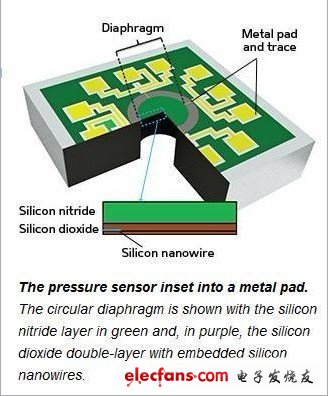
MEMS pressure sensor analysis 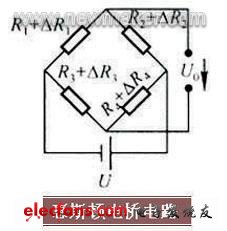
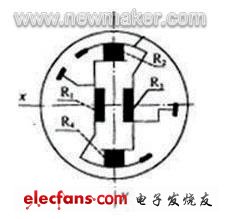

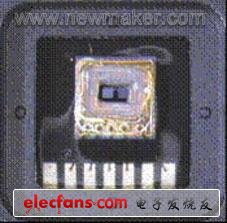
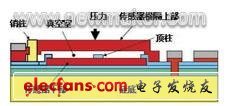
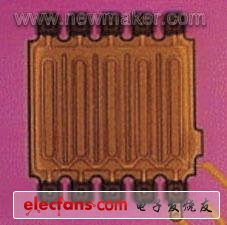
January 25, 2020